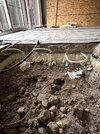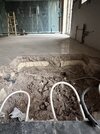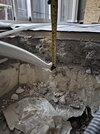- Joined
- 24 Jan 2021
- Messages
- 18
- Reaction score
- 0
- Country

I've had wet UFH for 12 years and it takes hours to heat up our rooms. My gas bills are extremely high especially now due to rising costs.
i'm not getting a minor renovation and my builder has discovered that the pipes are under 120mm of screed. ATM the concrete takes hours to heat up but then it does release heat for several hours.
It does have thick insulation boards under the pipe so if there's no downward heat loss i'm wondering if i'm losing heat or does the concrete just act like a storage heater.
Now i'm wondering if it's worth me doing retro fit on around 100m2 flooring at a cost of probably around 18k would it ever pay for it self or do I just live with the buried pipes
i'm not getting a minor renovation and my builder has discovered that the pipes are under 120mm of screed. ATM the concrete takes hours to heat up but then it does release heat for several hours.
It does have thick insulation boards under the pipe so if there's no downward heat loss i'm wondering if i'm losing heat or does the concrete just act like a storage heater.
Now i'm wondering if it's worth me doing retro fit on around 100m2 flooring at a cost of probably around 18k would it ever pay for it self or do I just live with the buried pipes
Attachments
Last edited:




